Voice referendum results: Which towns and suburbs recorded the biggest No vote
The Parliament vote was heavily defeated across Australia, with the No vote in some rural and regional parts of the country exceeding 80 per cent.
Every state in Australia returned a No result on Saturday night, with Queensland seeing the strongest rejection of the Voice of any state or territory, with 68 per cent No on Sunday morning.
Only three of the Sunshine State’s 30 federal constituencies supported the proposal – and it had the six main constituencies with the highest proportion of No votes in the country.
National leader David Littleproud’s rural seat of Maranoa, which stretches from Warwick, Dalby and Kingaroy to the Northern Territory border, saw an 84 per cent turnout.
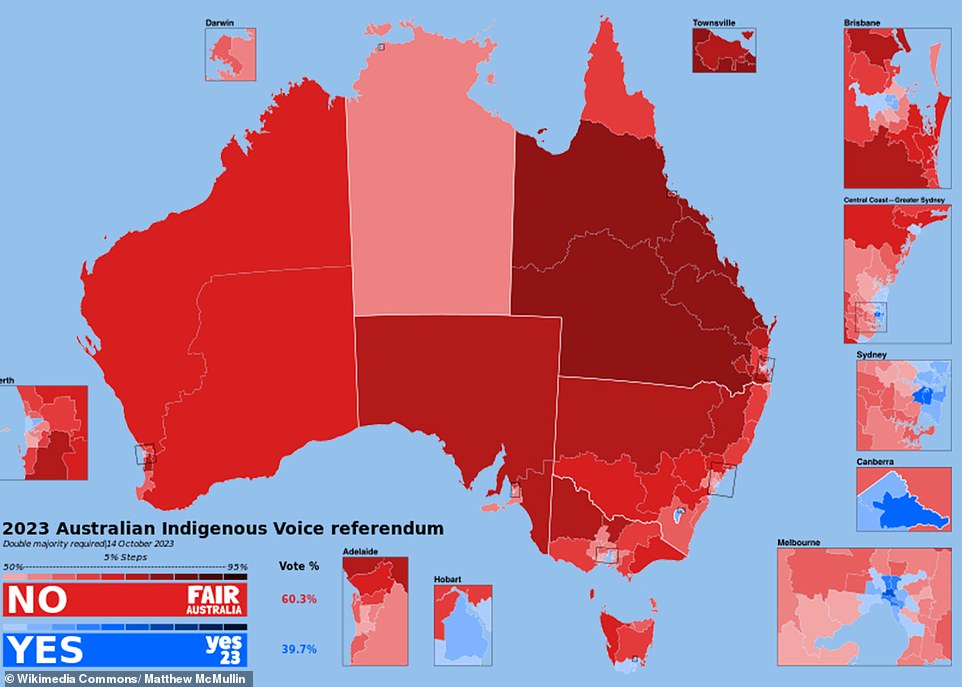
Every state in Australia returned a No result on Saturday night, with Queensland seeing the Voice’s strongest rejection of any state or territory. The darker the red, the bigger the No vote. Blue represents countries that voted Yes
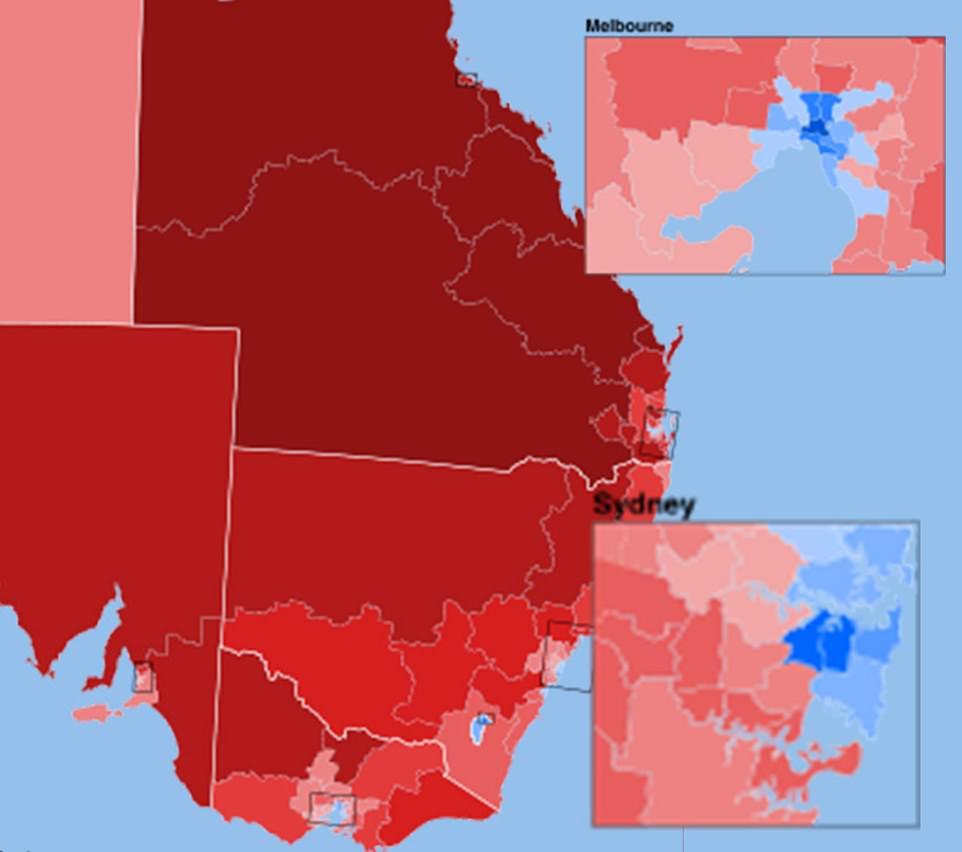
Rural areas overwhelmingly voted No, compared to some more densely populated, inner-city areas in the country where Australians strongly supported a “Yes” vote. Melbourne is top right, Sydney is bottom right
Not far behind was Flynn’s traditional constituency, where 83.6 percent of voters rejected the referendum question.
The same pattern was mirrored across the nearby rural electorates of Hinkler, Capricornia and Dawson, which all saw more than 80 per cent of the No vote, initial figures show.
All areas are dominated by mining, agriculture and heavy industry.
This contrasts with some more densely populated, inner-city areas in the country where Australians strongly supported a “Yes” vote.
For example, the city of Melbourne – a seat held by Greens leader Adam Bandt – had the highest proportion of Yes voters in the country with over 78 per cent backing the proposal.
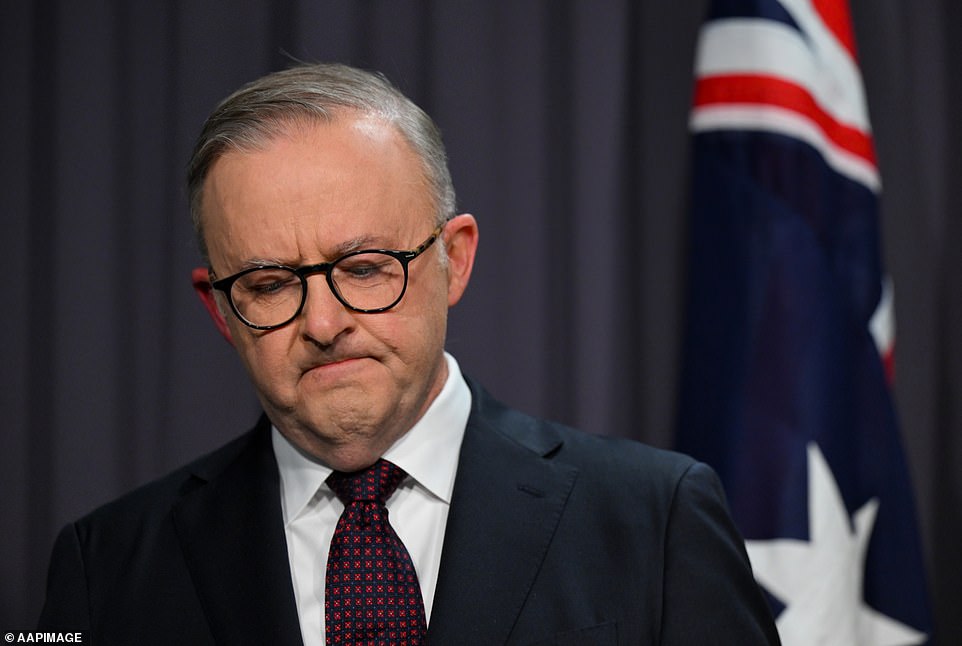
Prime Minister Anthony Albanese appeared cowering as he conceded defeat on Saturday evening
The Prime Minister’s own seat of Grayndler in Sydney’s inner west had the second highest share of the Yes vote with 74.5 per cent backing it.
Meanwhile, independent MP Bob Katter’s Kennedy seat in the northern Outback, which covers the northern suburbs of Townsville, the southern suburbs of Cairns and everything west of the Great Division, including Charters Towers and Mount Isa, saw 80.8 per cent of rejected electorate. voice proposal.
Mr Katter, who backed the No campaign because he argued it divided people along race lines, said on Saturday he threatened to ‘smack’ government officials and a journalist over disagreements about how to improve health outcomes for Australians indigenous.
“I don’t want to walk away from this life or this job knowing that those people have a life expectancy of 56 years,” Mr Katter told the Townsville Bulletin.
He added: “I have tried all the ways I have, through ministers, prime ministers, I have tried every way known to man and I have failed hopelessly.
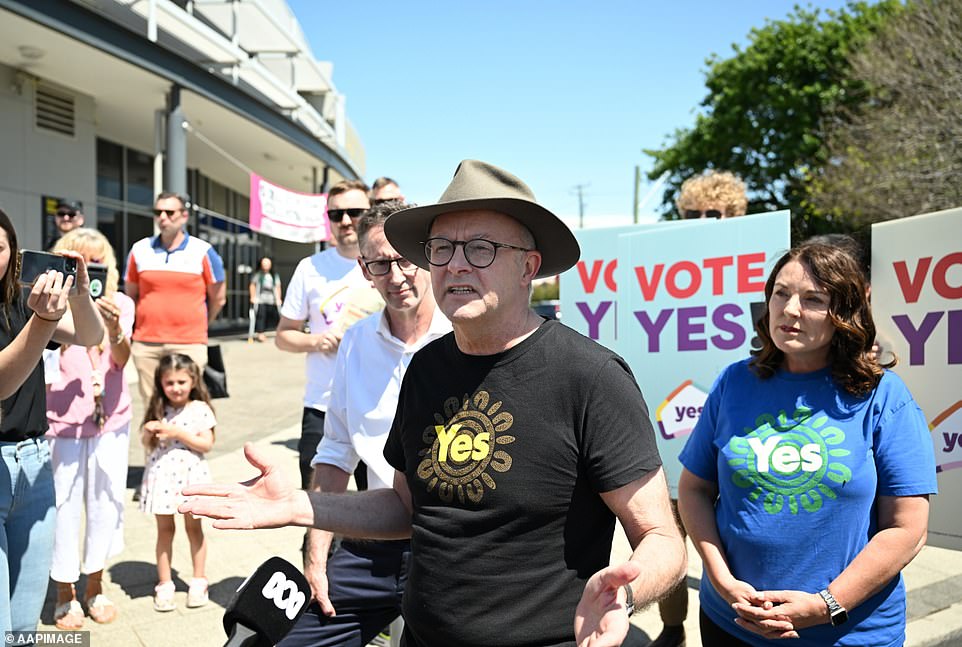
The Prime Minister’s own seat of Grayndler in Sydney’s inner west had the second largest share of the Yes vote with 74.5 per cent backing it.
“So I’m screaming and making people cry, I’m trying to hit people, I don’t know what else I can do.”
All three Queensland federal seats held by the Greens – Brisbane, Griffith and Ryan – were predicted to swing in favor of Yes.
Meanwhile, Treasurer Jim Chalmers’ electorate of Rankin, which is a safe Labor seat, voted No, as did other Labour-held federal electorates including Oxley and Blair.
The electorate of Grey, which covers 92 per cent of South Australia and has one of the lowest median household incomes in the country, had the seventh highest share of the No vote in the country at 79.7 per cent.
Parkes, which covers just under half of all of NSW stretching from Dubbo to Broken Hill and north to the Queensland border, was next with 78.8 per cent
Mallee in Victoria and Wright in Queensland rounded out the top 10 electorates without – with 78.5 and 77.8 per cent respectively.
Canning, Barker and O’Connor in Western Australia, Nicholls in Victoria and Groom in Queensland all had over 75 per cent of voters supporting no.
About 65 per cent of voters in Opposition Leader Peter Dutton’s seat of Dixon, in Brisbane’s north, rejected the proposal.
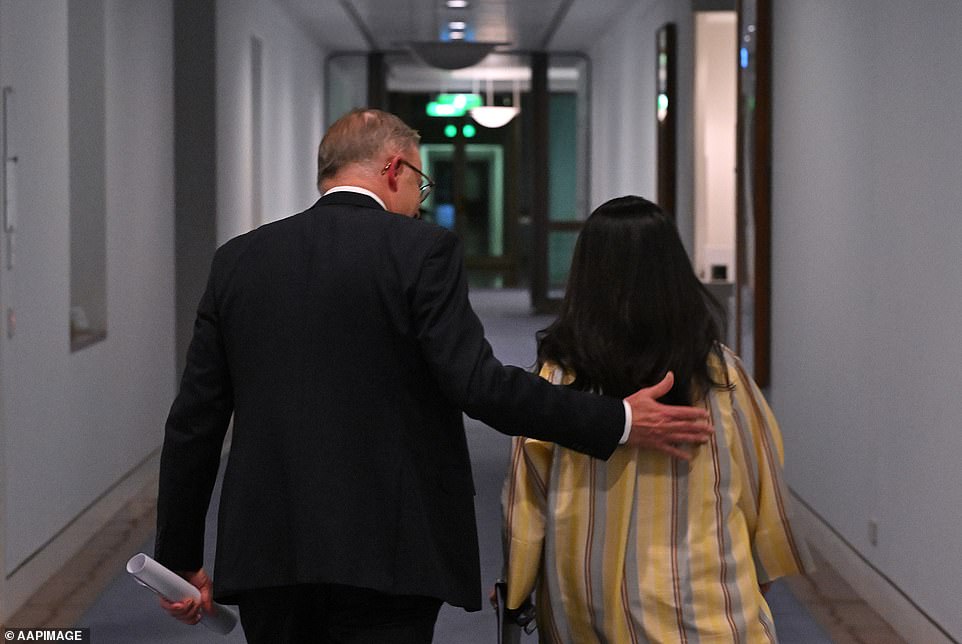
Australian Prime Minister Anthony Albanese comforts Minister for Indigenous Australians Linda Burney after giving a statement on the result of the Voice Referendum at Parliament House in Canberra, Saturday, October 14, 2023
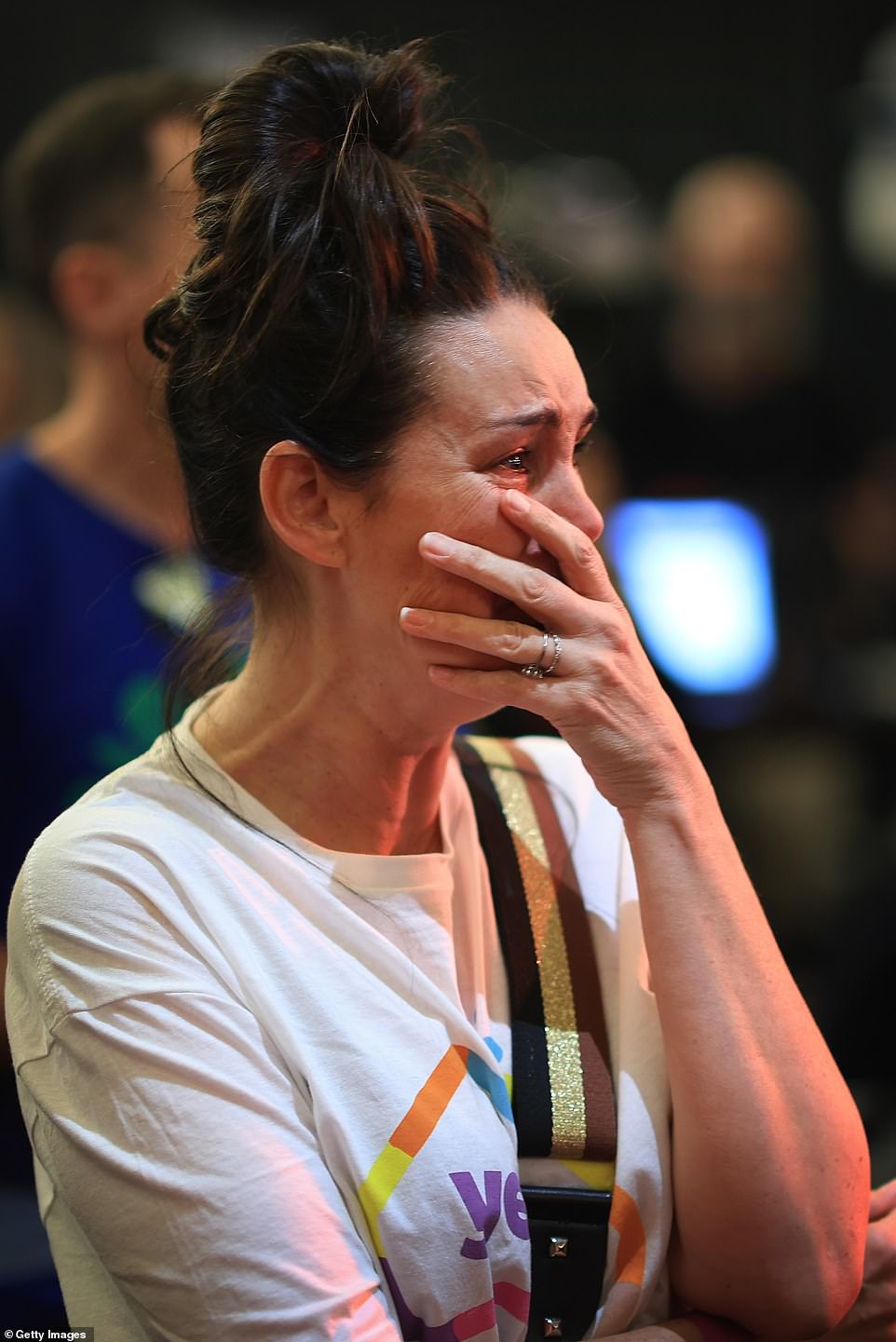
A supporter reacts in the Inner West for the official Yes2023 referendum function at Wests Ashfield Leagues Club on October 14
“This is the referendum Australia didn’t need to have. The proposal and the process should have been designed to unite Australians, not divide us,” Mr Dutton said.
“What we’ve seen tonight is Australians literally in their millions rejecting the prime minister’s defense referendum.”
After Tasmania and New South Wales were declared for the No camp, South Australia’s loss around 7.30pm on Saturday meant it was all over for the Yes campaign before polls closed in Western Australia.
While the vote split along rural and urban lines, the reasons why people voted No is more complex than where they live – according to emeritus professor of sociology Andrew Jakubowicz from the University of Technology Sydney.
“Having higher education in particular contributes to someone’s likelihood of voting Yes,” he told her A B C.
“A lot of it has to do with education, income, age and gender. There is one more factor that is a little harder to pin down.
“But this has been shown in other situations, where people who are more cosmopolitan and globally oriented are likely to support something like this, as they were in relation to the same-sex marriage plebiscite.”
The ACT, where over 40 per cent of voters have a university degree, was the only state or territory to vote Yes.
(tagsTranslate) daily mail(s) news(s) Melbourne(s) South Australia(s) Sydney(s) Tasmania(s) Western Australia(s) Queensland
